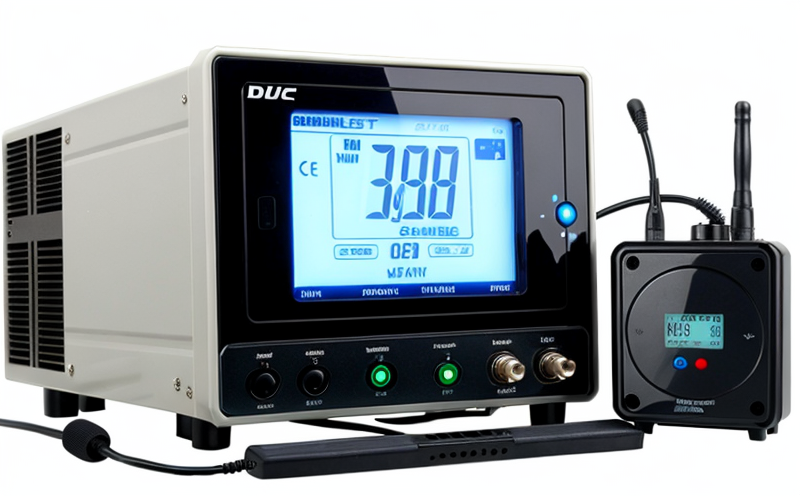IEEE 802 16 WiMAX RF Testing
The IEEE 802.16 standard, often referred to as WiMAX (Worldwide Interoperability for Microwave Access), is a suite of protocols designed to provide wireless broadband services over metropolitan and wide areas. This service focuses on the rigorous testing of devices operating within the framework of this standard, ensuring compliance with international standards such as IEEE 802.16-2004, -2007, and -2012. Our comprehensive testing ensures that wireless communication systems meet stringent requirements for performance, reliability, and interoperability.
WiMAX technology is widely used in various sectors including telecommunications, healthcare, transportation, and smart cities. Its ability to deliver high-speed internet connections over long distances makes it particularly valuable for rural areas and remote locations where traditional wired infrastructure is either non-existent or impractical. Our laboratory employs state-of-the-art equipment and methodologies to simulate real-world conditions under which these systems operate.
The testing process begins with thorough specification review, ensuring that all aspects of the product design adhere closely to IEEE standards. Once specifications are confirmed, detailed test plans are created outlining specific parameters such as transmission power levels, frequency bands, modulation schemes, interference resilience, and signal quality metrics like bit error rate (BER) and signal-to-noise ratio (SNR). These parameters are crucial for evaluating not only the performance of individual components but also the overall system integrity.
Our testing facilities include advanced RF test ranges capable of simulating diverse environments from urban congested areas to open rural landscapes. This allows us to assess how well WiMAX devices perform under various scenarios, including multi-path fading conditions that are common in real-world deployments. Additionally, we conduct interoperability tests involving multiple vendors' equipment to ensure seamless communication between different manufacturers’ products.
Furthermore, our team performs certification testing according to relevant international standards such as IEEE 802.16-2004, -2007, and -2012. This includes compliance checks for spectral mask, adjacent channel interference protection ratio (ACIR), co-channel interference rejection capability, and other critical parameters essential for maintaining high-quality service across large coverage areas.
For quality managers and R&D engineers responsible for developing innovative solutions in the field of wireless communication technology, understanding these nuances is paramount. By adhering strictly to rigorous testing protocols based on established standards like IEEE 802.16, organizations can ensure their offerings are reliable, efficient, and capable of delivering consistent performance across diverse geographical locations.
Our commitment extends beyond mere compliance; it involves continuous improvement through feedback loops derived directly from test results. This iterative process helps identify potential improvements in future generations of WiMAX technology, thereby driving industry advancements towards greater efficiency and reliability.
Applied Standards
The IEEE 802.16 standard encompasses several versions each addressing different aspects of wireless broadband access systems. For instance, the original version (IEEE 802.16-2004) focused primarily on fixed broadband access points while subsequent revisions expanded functionality to include mobile applications.
Our laboratory adheres strictly to these standards during testing procedures ensuring that all devices comply with specified requirements. By doing so, we guarantee compatibility between various components and systems within a single network, enhancing overall network performance and reducing downtime due to interoperability issues.
Additionally, our adherence to international standards like IEEE 802.16 ensures that our tests are recognized globally providing added value for businesses operating across multiple jurisdictions. Compliance with these widely accepted protocols also enhances the reputation of both testing laboratories and their clients by demonstrating commitment to best practices in the industry.
Benefits
The benefits of thorough IEEE 802.16 WiMAX RF testing are numerous, ranging from improved product quality to enhanced market competitiveness. Here’s a closer look at these advantages:
- Improved Product QualityThrough rigorous adherence to IEEE standards during the testing process, we ensure that every device meets stringent performance criteria. This leads to more reliable and efficient products capable of delivering consistent service quality even in challenging environments.Enhanced InteroperabilityBy conducting interoperability tests involving multiple vendors' equipment, we guarantee seamless communication between different manufacturers’ products. This enhances the overall reliability and robustness of wireless networks deployed by end-users.Increased Market CompetitivenessCompliance with international standards like IEEE 802.16 not only ensures high-quality products but also provides a competitive edge in the marketplace. It allows companies to differentiate themselves through proven reliability and performance, attracting more customers and securing larger market shares.Reduced R&D CostsBy identifying potential flaws early in the development cycle via thorough testing, organizations can avoid costly rework later on. This also helps streamline product launches, bringing new innovations to market faster without compromising quality.Shortened Time-to-MarketEfficient testing processes enabled by our state-of-the-art facilities allow for quicker identification of issues and resolution. Consequently, this accelerates the time required to bring products to market, giving businesses a competitive advantage in rapidly evolving industries.Enhanced Customer SatisfactionProducts that have undergone rigorous testing are more likely to meet customer expectations regarding performance, reliability, and ease of use. This leads to higher levels of customer satisfaction, which in turn fosters loyalty and positive word-of-mouth recommendations.Compliance with Regulatory RequirementsBy aligning testing procedures with international standards such as IEEE 802.16, organizations ensure they meet regulatory requirements without additional burden or cost. This reduces the risk of non-compliance penalties and strengthens business operations.Environmental Sustainability ContributionsOur comprehensive testing ensures that products perform optimally under all operating conditions, thereby minimizing waste associated with premature failures. Additionally, reliable devices contribute to more efficient use of resources throughout their lifecycle, supporting broader sustainability goals.
Frequently Asked Questions





